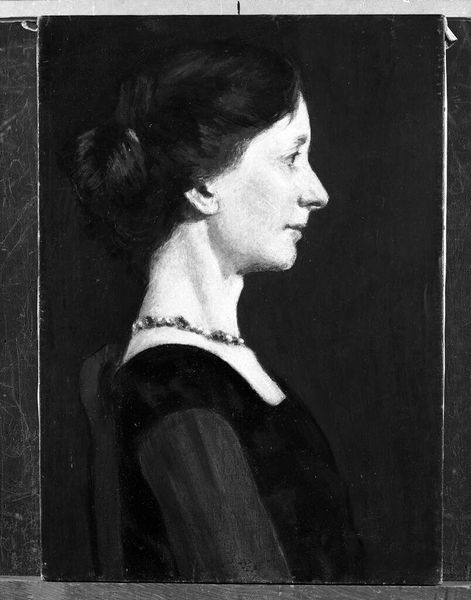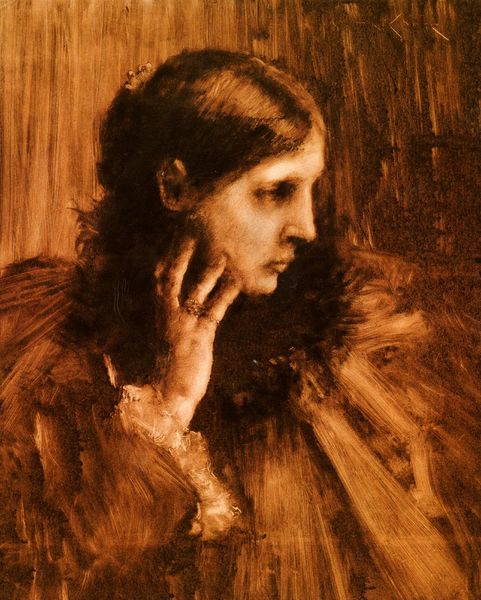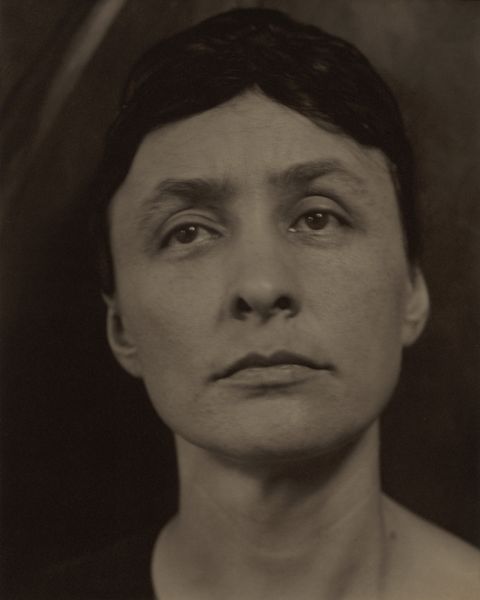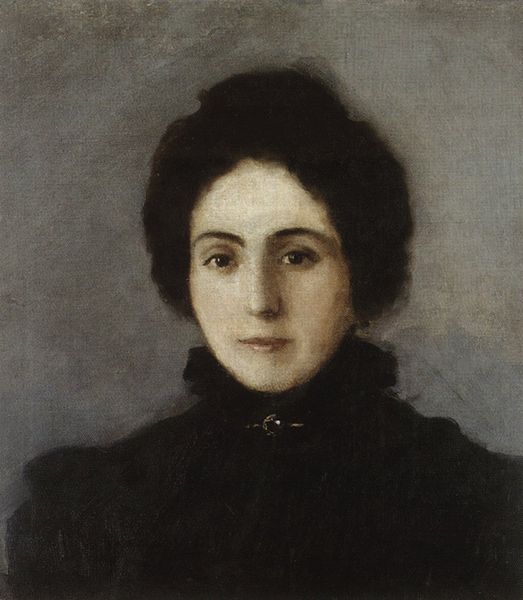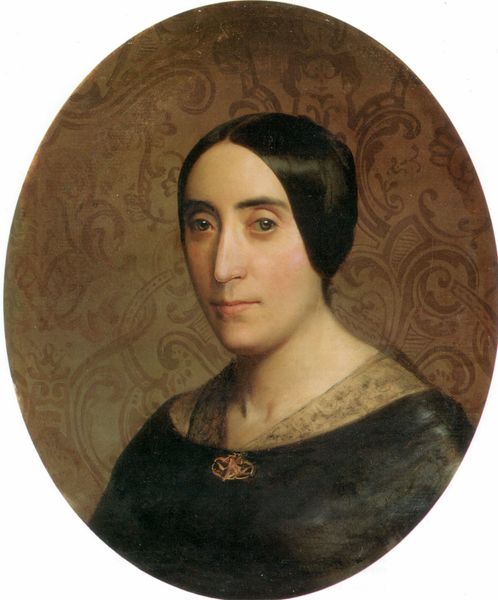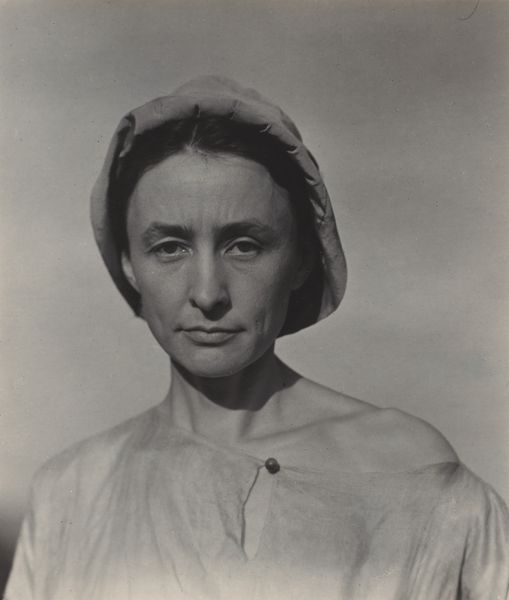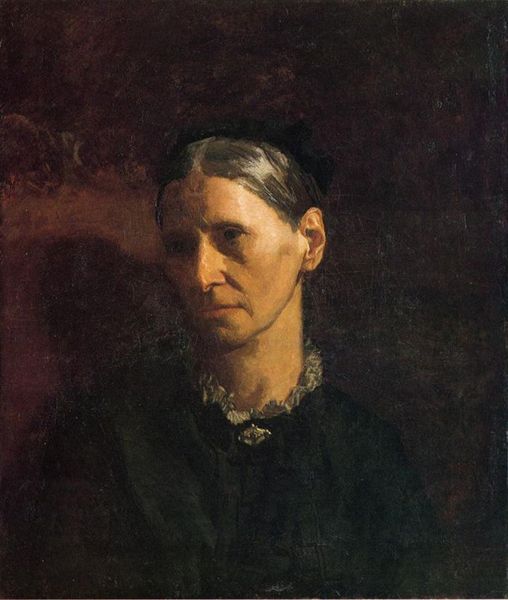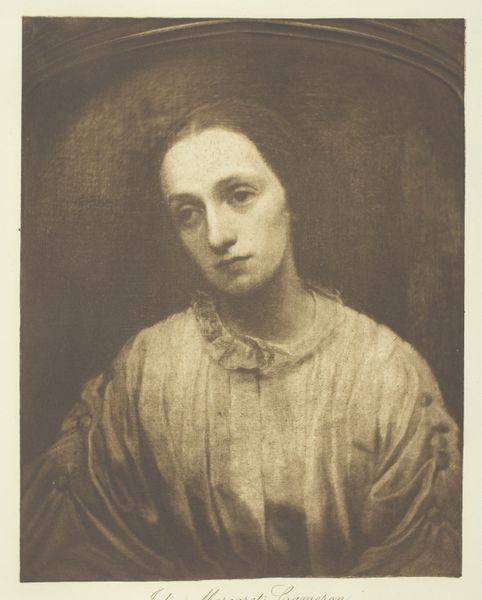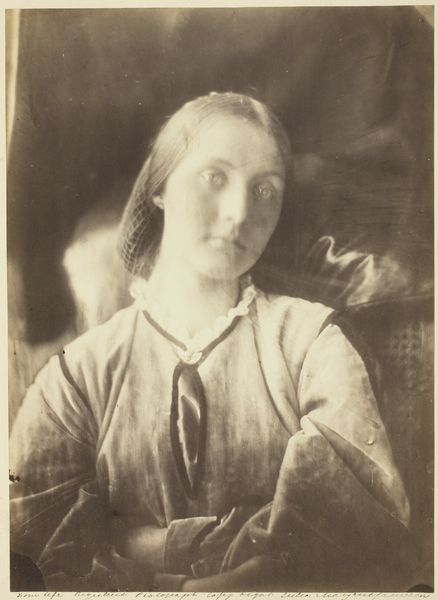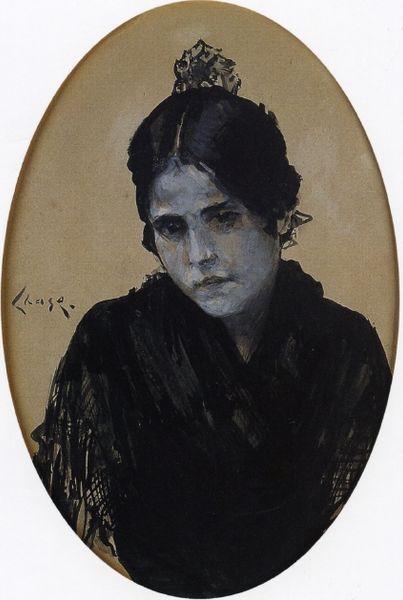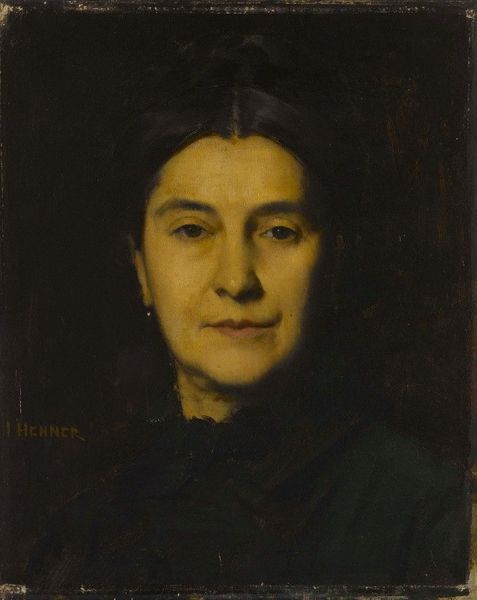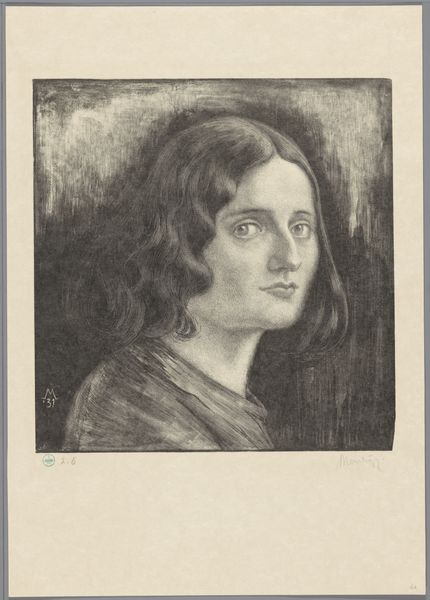
painting, oil-paint
#
portrait
#
portrait
#
painting
#
oil-paint
#
academic-art
#
realism
Dimensions: 37 cm (height) x 44.5 cm (width) (Netto), 42.4 cm (height) x 49.5 cm (width) (Brutto)
Curator: Here we have Valdemar Irminger's "Dameportræt," painted in 1896. It's currently held at the SMK, the National Gallery of Denmark. Editor: It has a rather melancholy air about it, wouldn't you say? A young woman, starkly framed, almost ethereally lit, as though caught in a moment of quiet contemplation, but I would question its quality as "Realism," wouldn't you? It's far more about the mood created. Curator: I find it incredibly compelling! This portrait speaks volumes about the status of women and their representation in art during that era. Irminger, as an artist trained within the established academic system, was making conscious choices about his subject and style. Academic art dictated acceptable forms of portraiture. And while "Realism" did represent everyday life, in order to receive acknowledgement at places such as the academy, art had to depict very controlled narratives to achieve it. How were paintings such as this perceived? Where were they displayed, and who owned them? These pieces all work together to answer the central question of reception of the image in Irminger's time. Editor: I am really struck by the very materiality of this piece, by the textures visible on the canvas. Look closely at how Irminger applied the oil paint to render the woman's face—the subtle gradations, the blending that gives it this softness. Her attire seems fairly ordinary; is she a patron, or merely a local subject used to experiment with artistic processes? One almost senses a challenge to conventional portraiture. This is not a wealthy woman in grand dress. Her expression is so unvarnished. I'd hazard a guess it was exhibited in smaller galleries that displayed "controversial" art to the establishment. Curator: Indeed. These nuances are so interesting. Her slightly downcast gaze perhaps alludes to the limitations imposed upon women by societal norms, a reality that may have resonated deeply with viewers. These questions that art raise are only amplified by socio-economic conditions of artistic making during its time, and those same socioeconomic conditions determined how pieces like these were publicly or privately appreciated. Editor: This exploration gives one such food for thought. Now when viewers gaze upon this artwork, it allows space for contemplating social constructs present at its time. It speaks volumes about human experience of all kinds.
Comments
No comments
Be the first to comment and join the conversation on the ultimate creative platform.
